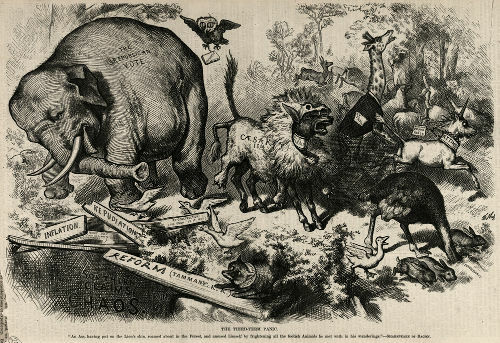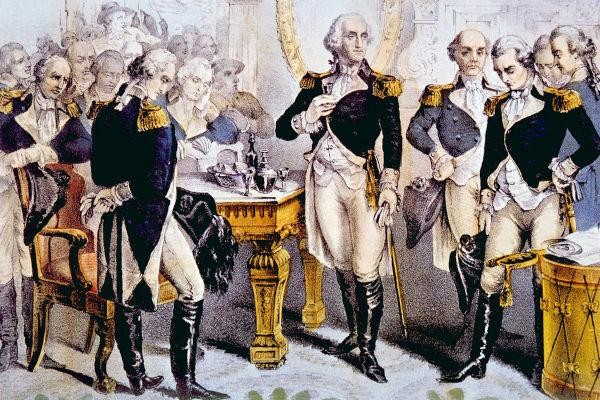Whenever there is an election process in the USA, news reports from around the world highlight the progress of the district's two major parties in that country: the BrokenRepublican it's the BrokenDemocrat.
In general terms, the Republican party, in the USA, has a profile more inclined to political conservatism and economic liberalism in the classical sense. Republicans, therefore, are given qualifiers such as conservative (conservative) and liberalconservative (conservative liberal).
O Democratic Party, on the contrary, is aimed at progressivism, in the sense that the political left attributes to this term. The expression is also used liberal(in English) to define the ideology of the Democrats, but it is not liberal in the sense of classical British liberalism. It is liberal in the sense of the progressive left, leaning towards affirmative action, social assistance policies, etc.
But this ideological accent did not always characterize the two parties, as we will see below.
Origin of the Republican and Democratic parties
Republican Party (Great Old Party)
The Republican Party, also known by the acronym GOP, which means grand old party (Great Old Party), derived from the then Federalist Party, active in the years following the USA independence. The Republican Party became, in the American society of the nineteenth century, the center of union of the most interested in the industrial development of the country, not the dissemination of small private property, in free work and salaried etc. Therefore, the development of this party took place in the North of the USA.
As researcher Antônio Pedro Tota says, the Republican Party had a base with:
“[…] a reformist, progressive, anti-slavery and tax-friendly platform that would protect industries and manufactures. During the Democrats' absence from Congress (in the Civil War 1861-1865), the Republican Party implemented laws favorable to the businesses and farmers in the North: with high tariffs, transcontinental railroad, farmer settlements in the West (homesteads). The Northern victory in the Civil War ensured Republican dominance until 1913 (except for two terms of Grover Cleveland, in 1885-1889 and 1893-1897). In large part, thanks to the Civil War, it has established itself as one of the two parties that dominate the American political landscape.” (TOTA, Antônio Pedro. New Studies. n. 81, June 2008. P. 74-5.)
Democratic Party
The Democratic Party, on the other hand, was derived from the Jeffersonian Republican Party, which was structured at the end of the 18th century. Initially following the line of Jeffersonian thought, the Democratic Party soon gained momentum in the South of the USA, linking itself to the slavery agrarian agenda. As emphasized by the same researcher mentioned above:
“From Jefferson, the party received the foundations of a minimal government – opposing the taxes that the Federalists defended – and support for agrarian interests, especially those of the South. In the 1830s, Andrew Jackson's Populist Party (supported by small farmers) strengthened the ranks of the Democratic Party, transforming it. With the Civil War, the Democratic Party, for having incited secession, became associated with southerners, racism and reactionaryism.” (TOTA, Antônio Pedro. Op. cit. P. 75).
Do not stop now... There's more after the advertising ;)
Change in the profile of the two parties from the 1920s onwards
Aftersecession war(or American Civil War), which lasted from 1861 to 1865, the US underwent major political and economic reforms. Slavery, for example, was abolished, but agrarian activity in the South needed to continue in some other way. In this way, new experiences were being tried. It didn't take long for the country to project itself, first within the scope of the American continent (with Theodorroosevelt), then worldwide after the First World War. It was after World War I that the two parties began to redefine their positions.
Some Democratic Party members have merged with Republican Party conservatives, creating a openly conservative front within the latter and drawing inspiration from conservative liberal intellectuals like Irvingbabbit. The Democratic Party, in turn, adopted a more progressive bias, aimed at the working class and welfare and labor policies. This perspective was boosted after the great depression of 1929-1933, headed by the then president F. D.roosevelt.
These two perspectives have remained more or less the same ever since.
Symbols of parties: the donkey and the elephant
The symbol of the Democratic Party is a dumb, while the Republican Party is a elephant. Both were created in the 1870s by cartoonist Thomasnast. The image below is from one of Nast's cartoons. It is possible to see the elephant on the left and the donkey (with a lion's fur) in the center.

Charge by Thomas Nest from 1874 *
Nast, by portraying the Democrats in the form of a donkey, wanted to convey the current idea among the party members themselves, who saw in the animal a symbol of firmness, boldness and stubbornness – contrary to what the republicans said, who used the image of the donkey to satirize the Democrats. The same is true for the elephant. Democrats, to satirize Republicans, used the image of the elephant to say that Republicans were pompous, arrogant and haughty. However, Republicans used the symbol to say that the party had strength and dignity, like elephants. Nast seized the idea and shaped it too.
*Image credits: Shutterstock and Everett Historical
By Me. Claudio Fernandes


